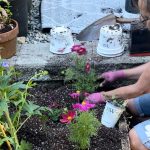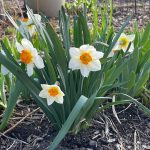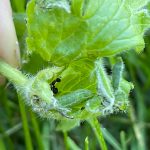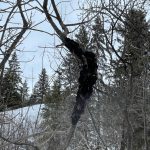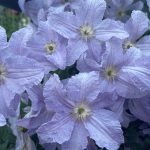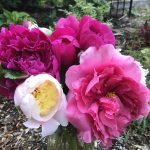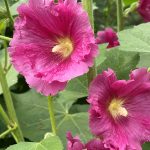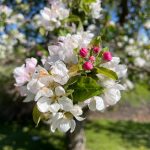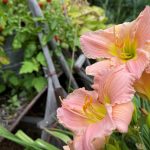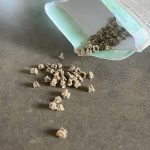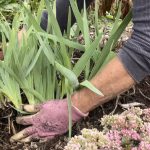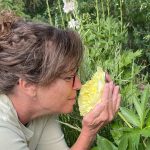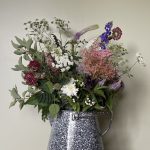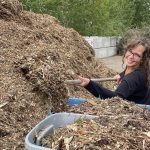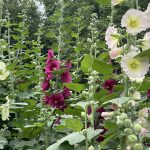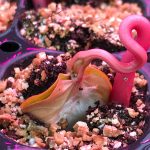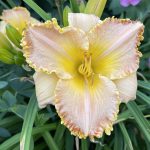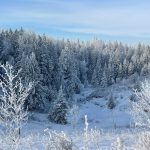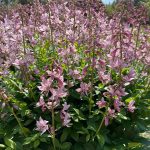How to Grow Hydrangeas on the Canadian Prairies and Other Zone 3/4 Locations [+Free Hydrangea Reference Chart]
Finding shrubs for cool, shady, damp garden spaces can be challenging and Hydrangeas are an excellent solution for this environment!
If you’re looking to grow hydrangeas on the Canadian Prairies, or any other Zone 3/4 location, this guide will equip your for your best chance at success!
This blog will explore the following:
- Interesting facts about Hydrangeas
- How to Care for Hydrangeas
- Hydrangeas that work well on the Canadian Prairies and other Zone 3-4 Plant Growing Zones

Want the inside scoop on more gardening tips? Get early access to all my blogs and exclusive content by signing up for my newsletter!
Interesting Facts about Hydrangeas
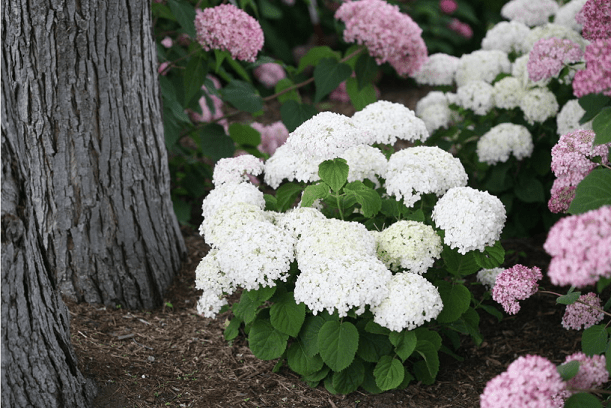
Hydrangeas are native to east Asia and northern regions of South America and Hydrangeas have risen in popularity on the prairies for their long-lasting autumn blooms and ease of care.
The blossom colours of Hydrangeas can be manipulated with soil pH in areas where pink or blue varieties are zone hardy. Blue flowers can be produced in acidic soil, and pinks in alkaline environments.
Many bright, fancy blue or pink varieties aren’t hardy for gardens on the Canadian prairies in plant growing Zones of 3-4, but we still have options, and new, hardy varieties of our favourite colours are coming out yearly.
Several Hydrangea varieties with light pink, white, red, and lime green flowers thrive in Zones 3 and 4. Many of these varieties naturally change blossom colours as they mature, so there’s no need to alter the soil pH.
Hydrangeas range in size from compact shrubs with dimensions of 1m x 1m (3’ x 3’) or grow as large as 3m x 3m (10’ x 10’).
Additionally, Hydrangeas are not easily bothered by diseases or pests!
How to Care for Hydrangeas
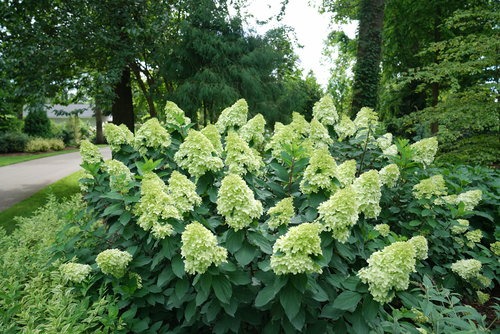
Most Hydrangeas prefer shady locations with a little sun exposure because they have shallow root systems and grow best in evenly moist soil.
Hydrangeas like to have a few hours of gentle sunshine, preferably in the early morning or late afternoon. If they are in a south-facing bed, plant them where they will receive shade in the middle of the day to protect them from hot afternoon sun.
As new varieties are becoming available, some have more sun tolerance.
Grow Hydrangeas in high-quality, moist, well-draining soil. Water them deeply and watch for signs of dehydration. Wilted or flagging leaves and yellowed, dry, crispy leaves are indications of water stress.
A layer of garden mulch is good for Hydrangeas. Spread 7.5-10 cm (3-4″) on the ground around the base of the trunk extending to the drip line. Mulch helps to level out soil temperatures, keeps roots cool, improves water retention, and keeps weeds at bay. Don’t allow mulch to rest up against the bark because it can weaken the bark integrity.
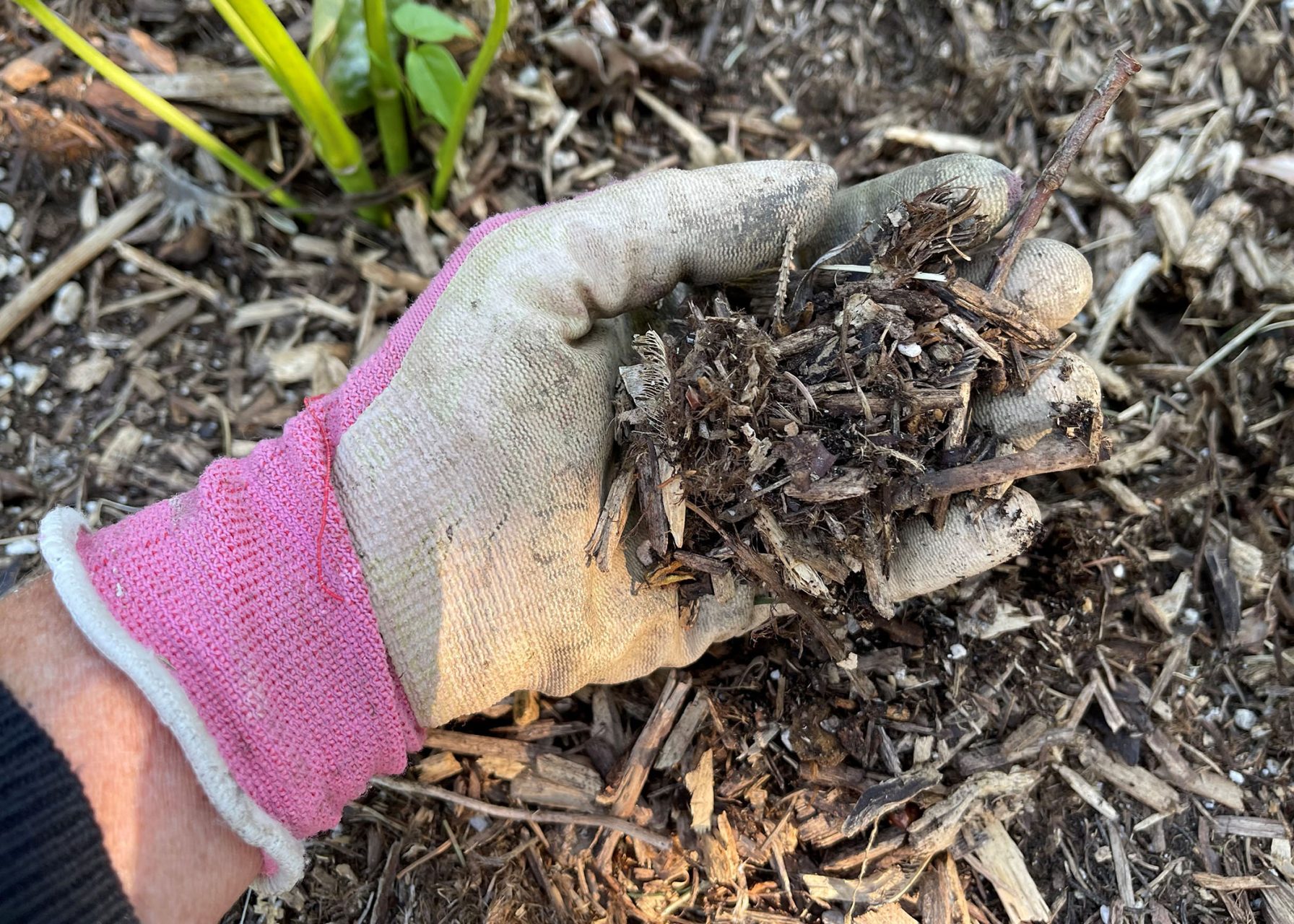
Related: For more on mulch, see What is Mulch? Making Gardening Magic with Mulch
Mix in a little bone meal into the soil when the Hydrangea is initially planted and then fertilize yearly with a slow-release fertilizer like 20-20-20 or 10-10-10.
Related: For more on how to transplant a shrub and post-planting care, see When and How to Plant a Tree
Provide Hydrangeas with extra winter protection with an additional layer of 7.5-10 cm (3-4″) of mulch spreading from the base of the shrub to the drip line. Remove this extra layer in the spring.
Some Hydrangea varieties may need to be staked if their blossoms get heavy and droop.
Is your Hydrangea not showing up in spring? Stay patient, and don’t give up on them! It’s probably not dead. Hydrangeas are the last to leaf out when the weather warms because they grow in the shade, and it takes a while for the ground to heat up.
Is your Hydrangea not blooming? Don’t panic. Hydrangeas need around 3 years to establish, and they are some of the last perennials to emerge in spring because of the cool, shady conditions, often taking until June to show signs of life.
Hydrangeas that Work Well on the Canadian Prairies or other Zone 3 or 4 Plant Growing Zones
There are two distinct classes of Hydrangeas that are hardy for Zone 3 and 4 Plant Growing Zones:
- Panicle Hydrangeas (Hydrangea Paniculata)
- Smooth Hydrangeas (Hydrangea arborescens)
Always check accompanying Hydrangea labels for the details on growing zone rating, mature height, flower colours, flower bundle size and shape, and any other particulars specific to that variety.
Let’s delve into these two types of Hydrangeas:
Hydrangea Paniculata / Panicle Hydrangeas for the Prairies
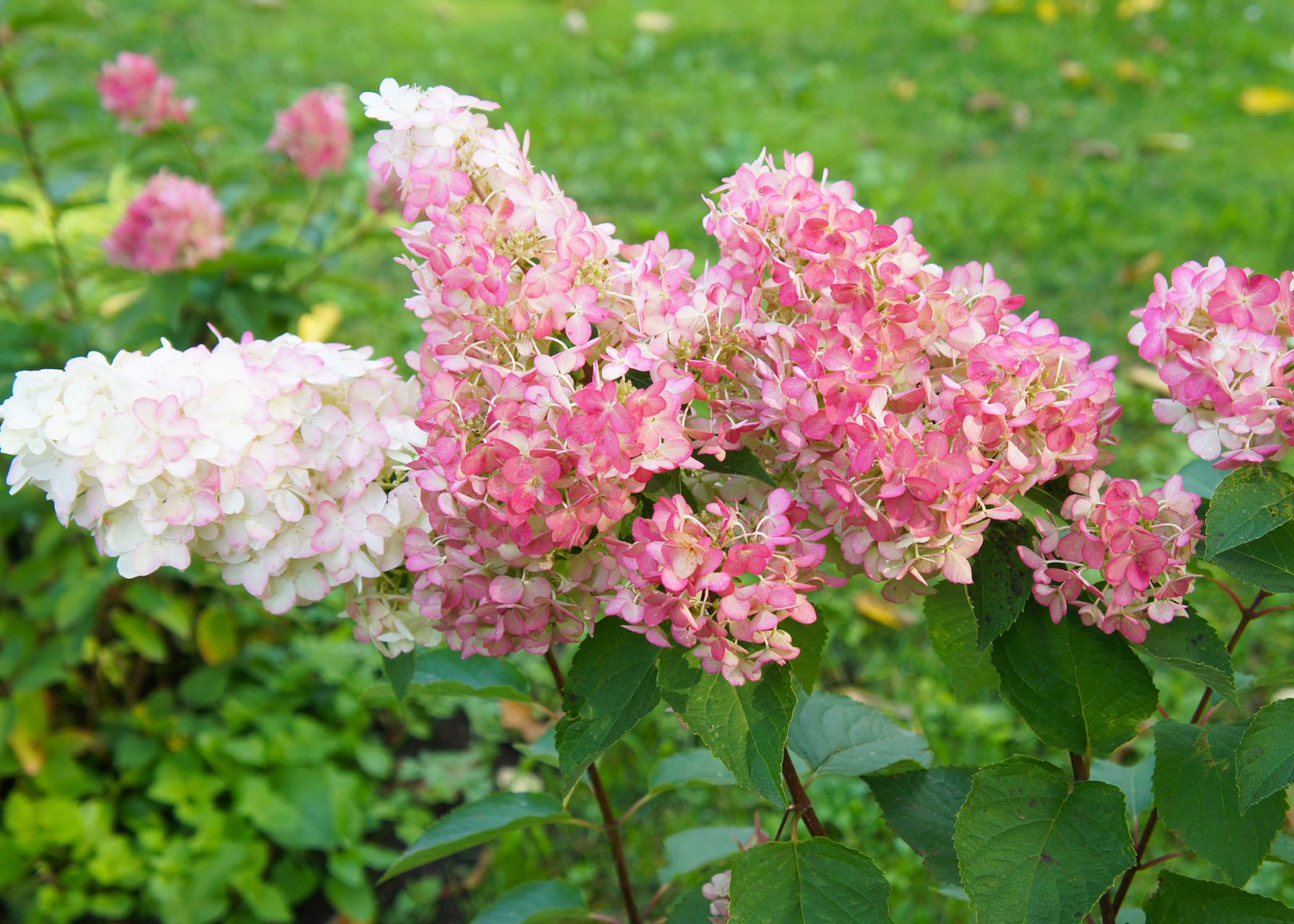
Panicle Hydrangeas are the most cold and sun-tolerant of all Hydrangeas.
They are characterized by reddish, strong woody stems with dark green, leathery, oval-shaped leaves that fade to yellow in late autumn and then fall from the branches.
Their flowers grow in collections of flowers that form cone-shaped blossom bundles, and most change colour as the flowers age. The size of the bundles varies with individual varieties.
The flower bundles of Panicle Hydrangeas hold through the winter outdoors on the stems, dry well, and are often used in dried flower arrangements.
Panicle Hydrangeas grow best in 6 or more hours of sunshine, but it’s best if the sun exposure occurs in either morning, late afternoon or early evening. Hydrangeas don’t love hot sun and appreciate shade during the middle of the day.
Hydrangea Paniculata may be pruned in the fall or very early spring before leafing out.
Alternately, the dried cone-shaped flowers can be left on the stems until spring to provide interest to the landscape through winter.
Panicle Hydrangeas bloom on new wood and benefit from a light trim at the branch tips yearly or bi-yearly once the blossoms have died.
Cut the stem back to a ‘fat bud’, which is a healthy, robust bud, to encourage new growth.
If an older plant has a weak bloom season or isn’t blooming any longer, it may need to be cut back by 1/3 of its height to stimulate more growth & flowering.

Want the inside scoop on more gardening tips? Get early access to all my blogs and exclusive content by signing up for my newsletter!
Hydrangea Paniculata Varieties that Perform Well in Zones 3/4 Include:
- Pinky Winky – grows 1.8-2m (6-8′) tall & wide, blooms white to 2-toned pink, and is a Proven Winners product
- Bombshell – is a dwarf variety, growing 0.6-1m (2-3′) tall and 1-1.2m (3-4′) wide, flowers white
- Little Lime – another Proven Winners product, grows to a height & width of 1-1.5m (3-5′), initially flowering lime green that turns to white and then finishes pink.
- Quick Fire – is an early bloomer by Proven Winners, boasting airy blooms that open white that change to dark pink. Quick Fire grows 1.8-2m (6-8′) tall & wide.
- Little Quick Fire – is a miniature version of Quick Fire by Proven Winners, growing 1-1.5m (3-5′) tall & wide with flowers starting white and change to a pink-red colour as they age.
- Fire Light – grows 1.8-2m (6-8′) tall & wide with flowers opening pure white that turn red as they mature. By Proven Winners.
- Bobo – is a dwarf variety by Proven Winners that grows to about 1 m (2’6″-3′) tall and 1-1.2m (3-4′) wide with profuse white blossoms.
- Lavalamp Flare – grows 0.6-1m (2-3′) tall & wide with flowers opening white and turning to red-pink hues.
- Pee Gee – is an older Hydrangea variety, growing 1.2m (4′) tall and 1m (3′) wide. Pee Gee blossoms white, and as the flowers age, they sport wisps of pink.
- Limelight – one of the older, grand hydrangeas, grows 1.8-2m (6-8′) tall & wide, displaying lime green flowers that mature to white.
Hydrangea Arborescens / Smooth Hydrangeas for the Prairies
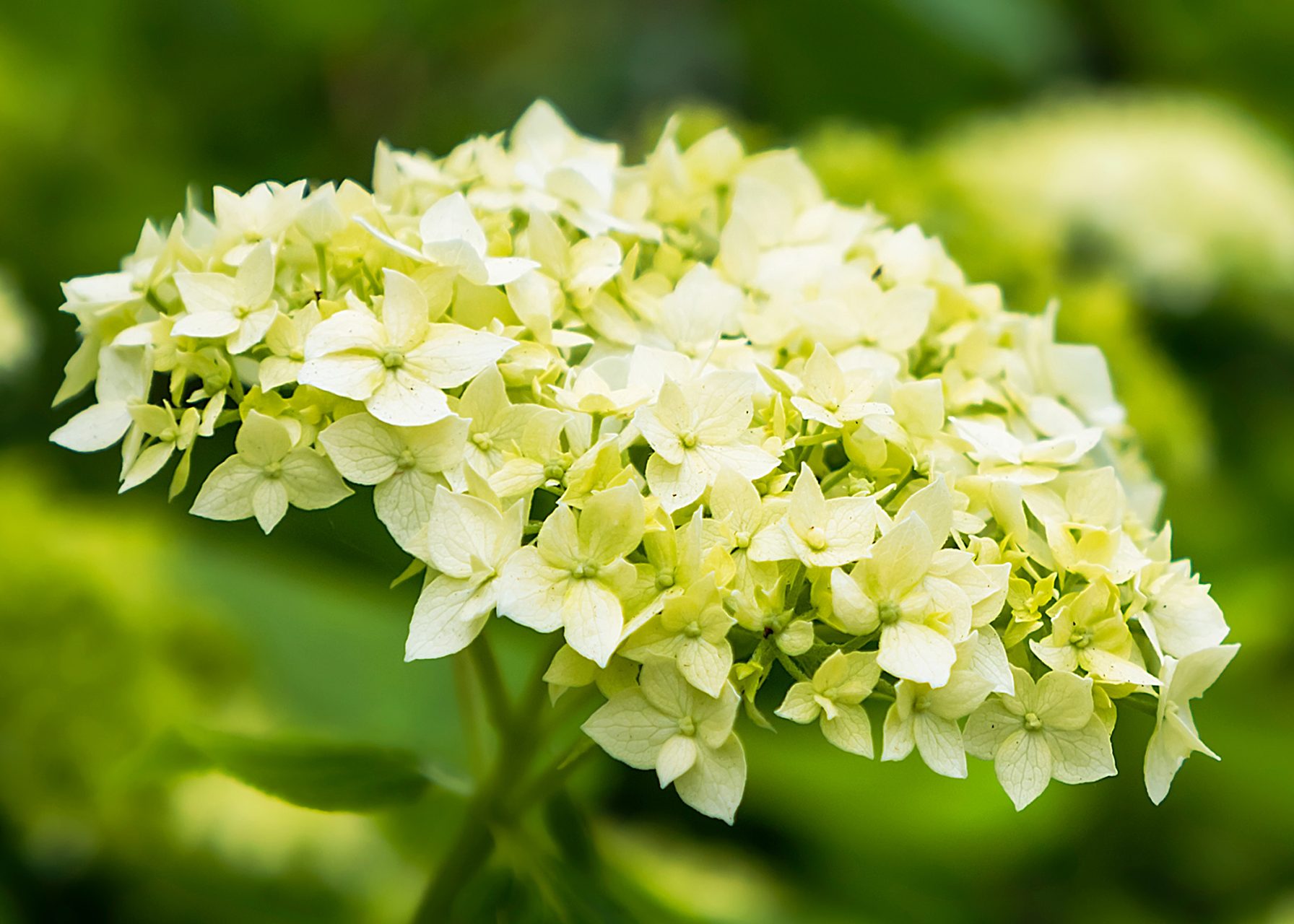
Hydrangea arborescens have smooth, green, flexible stems with soft, light green leaves.
Smooth Hydrangeas blossom with collections of flowers arranged in a broad dome, circular-shaped bundles measuring 15-30 cm (6-12″) across. The size of the blossom bundle varies with individual varieties.
The flower bundles of Hydrangeas arborescens hold through the winter outdoors on the stems, dry well, and can be used in dried flower arrangements.
Hydrangea arborescens flower on each season’s new wood, the benefit from a hard pruning, but they can be pruned in the fall or the spring, if you’d like to keep the dried flowers for winter interest.
Cut back to 30cm (12″) above the soil level in late fall once the flowers have died or in early spring before they have leafed out.
The flowers will eventually become small and unimpressive if they aren’t pruned back.
Popular Zone 3/4 Hydrangea Arborescens Varieties include:
- Annabelle – grows 1-1.5m (3-5′) high and 1.2-2m (4-6′) tall, producing large bundles of white flowers.
- Incrediball – by Proven Winners is an improved Annabelle with sturdy stems growing 1.2-1.5m (4-5′) tall & wide. Incrediball blooms lime green and changes to white as it matures.
- Invincibelle Spirit – grows 0.9-1.2m (3’6″-4′) tall & wide, flowering deep pink and aging to green, by Proven Winners.
- Invincibelle Ruby – Also a Proven Winners introduction, producing dark burgundy flower buds that reveal 2-toned flowers of ruby red and silvery pink. This variety grows 1-1.2m (3-4′) tall and .6-1m (2-3′) wide.
Free Downloadable Hydrangea Chart
I’ve compiled the above information into a easy-reference downloadable pdf reference chart.
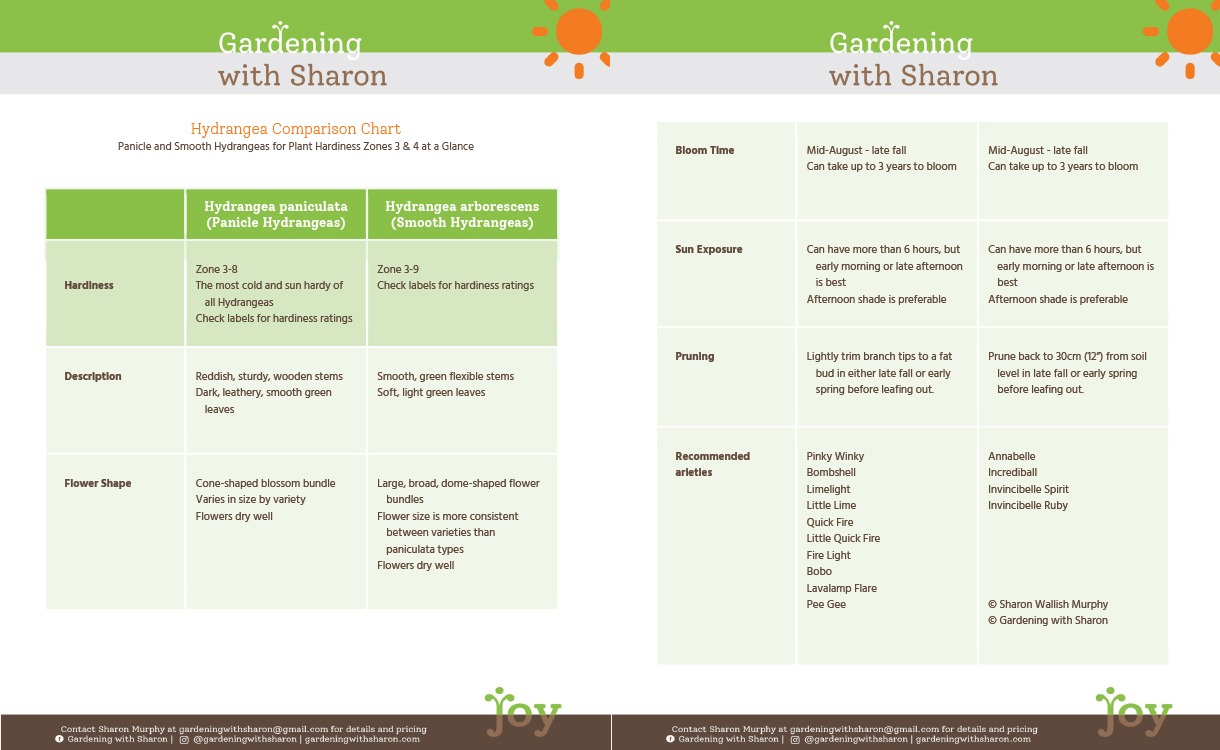
Hydrangeas are a Shade Garden’s Simple Joy
Hydrangeas are a great solution to a shade garden’s puzzling environment. They offer vibrance and are able to thrive in an environment many flowers struggle in.
Hydrangeas bring charm and beauty with their enchanting blossoms, and they can even extend the delight through the winter season! If you’re looking to bring a new flower into your garden, I highly recommend Hydrangeas!
©Sharon Wallish Murphy ©Gardening with Sharon


